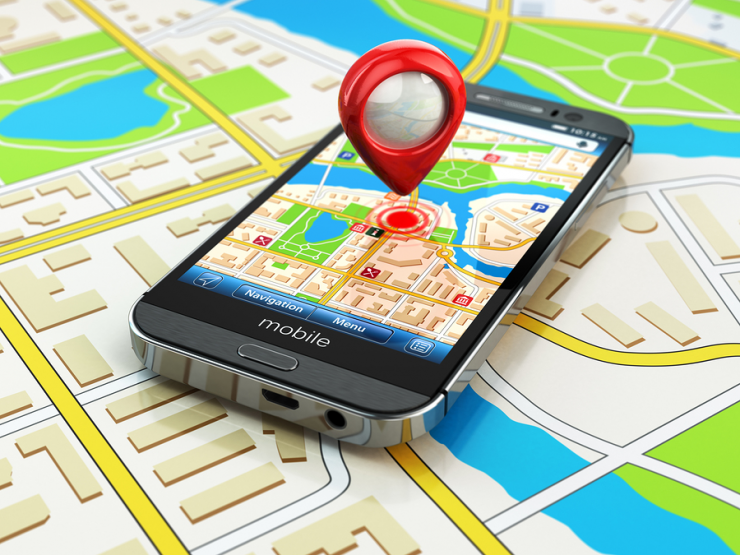GPS is one of the prominent features of smartphones and it seems like both people and apps require it more than ever before in order to make things happen. Here in this blog, we are tackling the issue of how to fix Huawei GPS Problem? GPS or Global Positioning System is a conglomeration of satellites working with antennas and receiving instruments on the phone that enables the user to track his/her location, check out nearest places or say the entire world. Many services and apps require location such as Uber or Ola needs user’s location to send cabs and that is where GPS comes into play.
GPS with Google Maps shows the route to the destination, for instance, it also shows the amount of traffic and much more which makes it a really amazing service. Although most of the time, GPS works pretty fine on smartphones with a good or average internet connection, there are times when it shows inaccurate or incorrect location or results. It can be a minor software glitch or a precursor to a serious firmware issue. On the other hand, it can be a hardware issue which needs to be fixed. This is an explicit list of tips and troubleshooting tricks you must perform to fix GPS problem on your phone.

How To Fix Huawei GPS Problem?
Tip #1:- Toggle the GPS
When you tap on ‘Location’ icon to start the GPS on your phone and it doesn’t start, what does that means? In simple words, it can be a minor software glitch that the service has encounter while starting it. Thus, toggle it twice or thrice to get it working properly. It is not a rocket science as you need to tap on the icon for several times to get the reception and it won’t take more than a minute.
Tip #2:- Turn ON the Airplane Mode
Airplane mode disables all connections and networks on the device. It is possible that due to any bug or network issue, the GPS on your phone wasn’t able to track the location. When you activate Airplane or flight mode, it disables all the incoming and outgoing networks. It tends to curb temporary software issues. To activate airplane mode, pull down the notification tray and tap on ‘Airplane Mode’.
Tip #3:- Switch to high accuracy
If the GPS on your phone is showing inaccurate or offset location, try to enable the high-accuracy feature. It will facilitate the phone to search for accurate results though it can consume more battery power.
- To activate it, go to Settings >> Location.
- Now, tap on Options and select Location Mode.
- Next is to tap on ‘High Accuracy Mode’ and it’s done.
Tip #4:- Remove mobile case and cover
Every smartphone has a GPS antenna built-in which sends and receives location-based data. However, if there is any interference or obstruction between the antenna and the satellites/receivers, the user will get an inaccurate or incorrect location. Thus, if it happens, try removing the case and the cover and check whether GPS is working properly or not.
Tip #5:- Check the power saving mode
Built-in power saving features disable any network or incoming/outcoming connection in order to save battery power. If the GPS is not working properly when the power saving mode is activated, you can turn off the power saving mode temporarily. Details regarding Power Saving Mode are available in the Settings app on all Android phones.
Tip #6:- Restart the device
It is one of the most followed troubleshooting tips as restarting the phone has a great impact on its performance. First of all, users are recommended to reboot their device at least once a day. The reason is, when a user restarts the phone, the system releases all the memory and resources used by apps and services. It also deletes temporary cache files. Upon restart, the phone will start with plenty of resources available for use.
Tip #7:- Update apps/firmware
Keeping the phone, firmware, and apps updated is crucial because outdated apps can induce errors and bugs that can problematic for the working of a smartphone. If GPS or any other service on your phone isn’t working as it probably should check out for the apps that need to be updated as well as firmware that needs an update. You can check out if the firmware needs an update at “Settings >> About Phone >> Software Update”.
Tip #8:- Clear cache
Google Maps is one of the powerful GPS-based software across iOS and Android devices. Keeping it updated is crucial in order to get the best of features rather than trying to get the results when the app is outdated. If you have observed any problem with GPS or Google Maps, you can delete the cache files specifically for the Google Maps app. Go to “Settings >> Apps >> Show System Apps” and check out for AGPS. When found, tap on clear cache and reset the particular app. This will restart both GPS service and Google Maps on your phone.
Tip #9:- Use external GPS receiver
If the GPS reception is not good or the built-in receiver has worn out, you can install external GPS receiver. There are plenty of options available on e-commerce sites like Amazon where you can buy external GPS receivers or signal extenders to get the most of location-based services on your phone.
Tip #10:- Use GPS Status & Toolbox
Download the app called “GPS Status & Toolbox”. This app is equipped with various features that will enable the user to tweak into GPS-based services. It will help the user fix GPS-based glitches. It can also calibrate the GPS, provide information about signal reception and much more.
Read More:
- Guide to Fix Ulefone GPS Problem [Quick Troubleshoot]
- How To Fix Vivo GPS Problem [Methods & Quick Troubleshoot]
- Methods To Fix GPS problem in Xiaomi Redmi Note
- Troubleshoot Guide to Fix GPS problem on Micromax Canvas [Solved]
